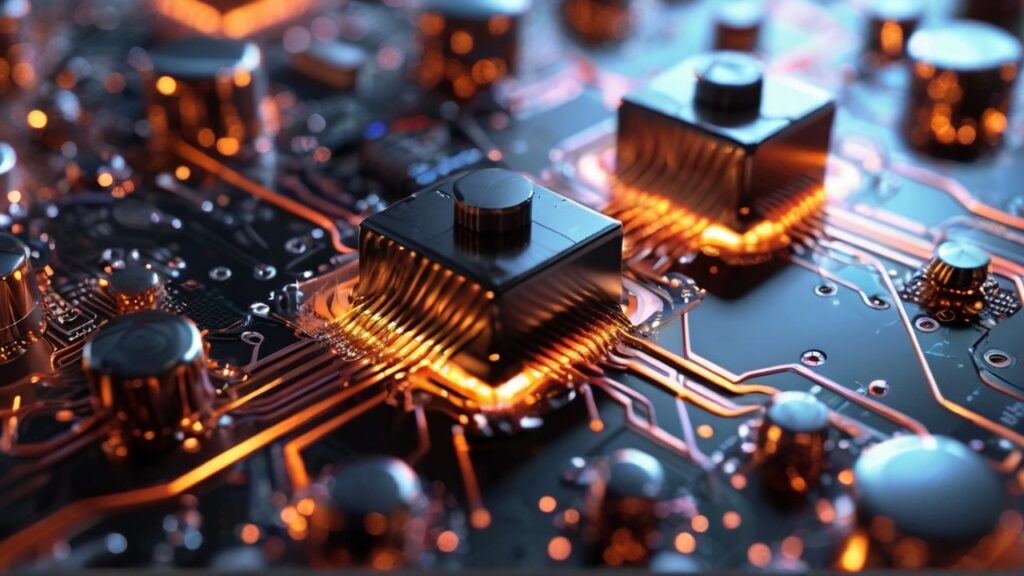In a world where electronic devices are evolving at a rapid pace, the need for innovation in materials that can power these advancements is more crucial than ever. Recently, scientists have made groundbreaking progress in developing a new class of quantum critical metal, which could potentially reshape the future of electronics. Let’s dive into the details of this discovery and explore how it might impact the technology we use every day.

Understanding Quantum Criticality
Quantum criticality, at its core, refers to a state where materials undergo a phase transition at absolute zero temperature. These phase transitions, unlike the ones we commonly experience in day-to-day life (like ice melting to water), occur due to quantum fluctuations rather than thermal fluctuations.
But why is this important? In quantum critical metals, electrons behave in ways that defy traditional understanding. At quantum critical points, electrons no longer act as individual particles but behave collectively, creating new states of matter. This opens up a range of possibilities for materials that could be harnessed in high-performance electronics.
Researchers have now identified a new class of quantum critical metals, which could have significant implications for the development of more energy-efficient and powerful electronic devices. By fine-tuning the quantum behavior of these metals, scientists hope to unlock novel electronic properties that can enhance device performance in ways previously thought impossible.
The Breakthrough: Vanadium Dioxide

In a recent study conducted by researchers, Vanadium dioxide (VO2) has been a focus of attention. This material is already known for its unique ability to undergo a phase transition from an insulator to a conductor at around 68 degrees Celsius. However, when cooled to lower temperatures, researchers observed behaviors that suggest the presence of a quantum critical point.
What makes this discovery exciting is that it provides a new playground for exploring quantum phenomena. Vanadium dioxide’s ability to shift between phases at various temperatures is now understood to be influenced by quantum mechanical effects, making it a prime candidate for further exploration in quantum criticality.
This newfound knowledge could lead to the creation of materials that allow electronics to operate with much greater efficiency, especially in extreme environments or high-performance computing applications.
The Impact on Modern Electronics

The implications of this discovery are vast. Today’s electronic devices rely heavily on semiconductors, which, despite their advantages, have limitations in terms of energy efficiency and scalability. Quantum critical metals could offer a pathway to overcoming these limitations.
Traditional semiconductors consume significant amounts of power, especially in high-performance applications. By incorporating quantum critical metals into circuits, energy efficiency could be dramatically improved. This could lead to devices that consume less power while delivering the same, or even higher, levels of performance.
Quantum critical metals may enable faster information processing and data transmission. In the world of computing, speed is paramount, and materials that can operate at quantum critical points could revolutionize the performance of CPUs and GPUs, making our devices significantly faster and more responsive.
These metals could also allow electronic devices to function optimally in extreme temperatures or high-radiation environments. This is especially useful for industries such as aerospace, defense, and deep-space exploration, where electronics must withstand harsh conditions while still delivering top performance.
Quantum Criticality and Superconductivity: A Perfect Pair?
Another exciting aspect of quantum critical metals is their potential to coexist with superconductivity. Superconductors, which can conduct electricity without resistance, have long been viewed as the holy grail of electronic materials. However, they typically require extremely low temperatures to function.
Quantum critical metals may pave the way for the development of materials that exhibit superconducting properties at higher, more practical temperatures. This could unlock new possibilities for technologies like quantum computing, where superconductivity plays a key role in building qubits — the basic units of quantum information.
Challenges Ahead
While the potential benefits of quantum critical metals are clear, there are still many challenges to overcome. For one, creating and maintaining quantum critical states in materials is extremely difficult. The conditions required to achieve quantum criticality are often so precise that even small deviations can disrupt the delicate balance needed for these effects to manifest.
Moreover, integrating these materials into existing electronic devices will require significant advancements in both material science and engineering. Researchers will need to find ways to make quantum critical metals more stable and easier to work with in practical applications.
What's Next for Quantum Critical Metals?
The future of quantum critical metals holds immense promise. As researchers continue to explore the properties of materials like vanadium dioxide, we can expect to see a growing number of breakthroughs that bring us closer to realizing the potential of these revolutionary materials.
In the near term, we might witness the development of prototypes for more efficient electronic devices, powered by quantum critical metals. These devices could be used in a variety of applications, from consumer electronics to industrial equipment and scientific research tools.
How A SQUARE SOLUTION Is Preparing for the Quantum Revolution
At A SQUARE SOLUTION, we’re always looking towards the future, and quantum critical metals represent a new frontier in electronic materials. As digital marketers, web developers, and app developers, we understand that staying ahead of the curve means embracing emerging technologies that will shape the future.
By keeping a close eye on advancements in quantum materials, we can better position ourselves to serve clients who are looking to innovate in industries that rely on cutting-edge technology. Whether it’s optimizing the performance of quantum-enhanced devices or creating new digital experiences that leverage the power of next-gen materials, A SQUARE SOLUTION is ready to support your technological journey.
The discovery of a new class of quantum critical metal is a significant step forward in the field of materials science. As researchers continue to unravel the mysteries of quantum criticality, we can expect to see these discoveries translate into real-world applications that improve the performance, efficiency, and sustainability of electronic devices.
At A SQUARE SOLUTION, we’re excited to be part of the technological revolution that will be powered by advancements like these. Stay tuned for more updates as we continue to explore the latest in quantum technology and its potential to transform the world of electronics.
